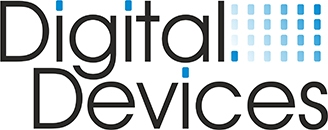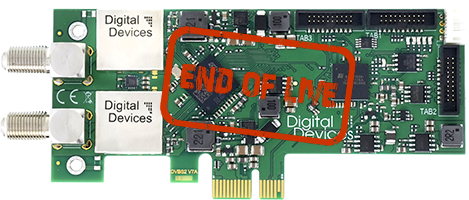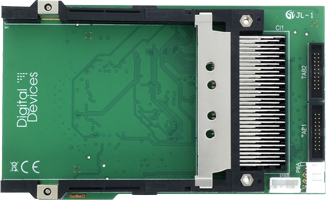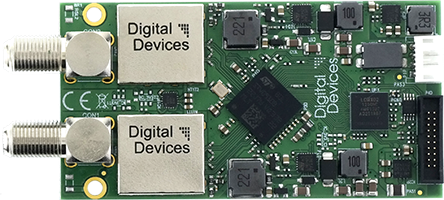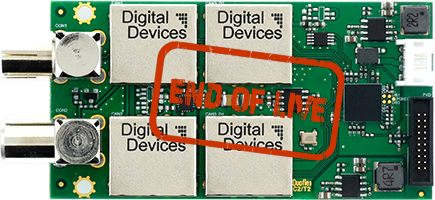Dual Tuner (Two Separate Tuners on One Card)
- 2x DVB-S/S2 tuner
- Watch one channel and record another channel simultaneously
- Live TV
- Timeshift
Support of many TV Applications
- Microsoft Windows® Media Center 7/8, DVBViewer, Media Portal, Gen2VDR, MythTV
Features
- QPSK up to 67.5 MSym and up to 180 MBit/s per channel (required UltraHD transponders)
- Sensitivity < 30 dBµV (20 dBµV DVBS2 QPSK 1/2)
- 2 – 3 dB lower ground noise, compared to previous version
- 30% less power consumption, compared to previous version
- 30% smaller
- Higher tolerance with bad RF conditions like narrow transponders, reflections, bad connectors or not terminated wiring.
Advanced Version Only
- 16 APSK
- 32 APSK
- Low QPSK code rates
- VCM
- ACM
- Short Frames (16 instead of 64KBit)
- MIS (Multi Input Streams)
Differential Data Transmission
- Prepared for differential connection of data cables (LVDS) > 400% higher throughput (UltraHD)
- Downward compatible to existing Data Transmission of 80 Mbit
Expandable Module System for 3 Expansion Connectors
- To connect up to three Digital Devices DuoFlex cards which could be DVB-S2, DVB-C/C2/T/T2 or CI modules DVB-T2 features.
Security
- Designed and developed according to European standards DIN EN ISO 9001:2000.
DiSEeqC 2.0 Support
Unicable® SCR/Cenelec EN50494
- Supports the connection of up to 8 tuners via a single antenna cable
- Requirement: Unicable®/SCR/CENELEC EN50494 compliant LNB or multi switch
JESS©/Cenelec EN50607
- Supports up to 32 tuners under EN50607 using a single antenna cable
- Requirement: CENELEC EN50607 compliant LNB or multi switch
Green IT
- No tantalum capacitors
- No electrolyte capacitors
Suitable for very Dense Cases
- Brackets with half or full size are shipped together with the card.
- Full size brackets allows mounting of 4 tuners on one bracket.
Satellite Characteristics
- Symbol Rate: 1 MSym up to 67.5 MSym DVB-S2
- LNB Power:
- Max. 19 V, 1 A pulse current, 500 mA continuous current
- Overcurrent protection
- Short-circuit protection
- L-Band: 950 MHz – 2150 MHz
- DVB FEC: (Auto Spectral Detection)
- Modulation: QPSK/8PSK
- Full DiSeqC 2.X supports USALS
Satellite Characteristics Advanced Version
- 16 APSK
- 32 APSK
- Low QPSK code rates
- VCM
- ACM
- Short Frames (16 instead of 64KBit)
- MIS (Multi Input Streams)
Standard Connectors
- 2 input F-Sockets (IEC 60169-24), (support possible required power supply to LNB)
- Three 20-pin connectors to connect to Digital Devices Duoflex cards like tuners and CI modules
- Standard Sherlock power connector for LNB (max. 20 W)
Unicable® Compliant
- SCR/Cenelec EN 50494
JESS® Compliant
- Cenelec EN 50607
Green IT
- RoHS compliant
- WEEE DE 99353762
Power Consumption
- PCIe compliant
- 12 V/260 mA = 3.1 W 2x DVB-S2
Power Supply
- 12 V only (9 – 17 V)
Supported Operating Systems
- Linux (ab Kernel 2.6.34)
- Microsoft Windows® 7 (32/64 Bit) (incl. Windows® Media Center)
- Microsoft Windows® 8 (32/64 Bit) (incl. Windows® Media Center)
- Microsoft Windows® 10 (32/64 Bit)
System Requirements
- Dual Core Intel® or AMD® CPU
- 512 MB RAM
- 1x PCIe slot (x1 up to x16)
Dimensions
- L 53 mm, W 127 mm, H 14 mm
DuoFlex CI – Common Interface
- With MTD technology
- The DuoFlex CI is compatible to all Digital Devices DVB-Cards
More details...
| DVB-S2/S2X Features |
Max SX8 |
Max SX8 Basic |
Max S8 |
Max M4 |
Cine S2 V7A |
| Short Frames | |||||
| Long Frames | |||||
| ACM/VCM | |||||
| MIS | |||||
| Annex M | |||||
| Channel Bonding (S2X) | |||||
| QPSK 1/4,1/3,2/5 | |||||
| QPSK 1/2, 3/5, 2/3, 3/4, 4/5, 8/9, 8/10 | |||||
| QPSK 13/45, 9/20, 11/20 | |||||
| QPSK 11/45, 4/15, 14/45, 7/15, 8/15, 32/45 | |||||
| 8PSK 3/5, 2/3, 3/4, 5/6, 8/9, 9/10 | |||||
| 8PSK 23/36, 25/36, 13/18 | |||||
| 8PSK 7/15, 8/15, 26/45, 32/45 | |||||
| 8APSK-L 5/9, 26/45 | |||||
| 16APSK 2/3, 3/4, 5/6, 8/9, 9/10 | 3 | ||||
| 16APSK 26/45, 3/5, 28/45, 23/36, 13/18, 7/9, 77/90 | |||||
| 16APSK 7/15, 8/15, 26/45, 3/5, 32/45 | |||||
| 16APSK-L 5/9, 8/15, 1/2, 3/5, 2/3 | |||||
| 32APSK 3/4, 4/5, 5/6, 8/9, 9/10 | 3 | ||||
| 32APSK 32/45, 11/15, 7/9 | |||||
| 32APSK 2/3, 32/45 | |||||
| 32APSK-L 2/3 | |||||
| 64APSK 11/15, 7/9, 4/5, 5/6 | |||||
| 64APSK-L 32/45 | |||||
| 128APSK 3/4, 7/9 | |||||
| 256APSK 32/45, 3/4 | |||||
| 256APSK-L 29/45, 2/3, 31/45, 11/15 | |||||
| VL-SNR | |||||
| Maximum Symbolrates (MSymbols/s) |
Max SX8 |
Max SX8 Basic |
Max S8 |
Max M4 |
Cine S2 V7A |
| QPSK | ~954 | 64.54 | 45 | 46 | 67.5 |
| 8PSK/8APSK | 864 | 64.54 | 45 | 46 | 67.5/455 |
| 16APSK | 64.54 | 34.53 | 67.5/33.755 | ||
| 32APSK | 51.64 | 27.53 | 54/275 | ||
| 64APSK | 434 | ||||
| 128APSK | 36.854 | ||||
| 256APSK | 32.254 | ||||
| Annex M | 500 | ||||
| Card Features | |||||
| Demodulators/Channels | 8 | 8 | 8 | 4 | 2 |
| Inputs | 4 | 4 | 4 | 4 | 2 |
| BBFrame Output |
3 16APSK, 32APSK possible but 4dB loss of performance
4 Maximum DVB-S2/S2X LDPC bitrate is limited to 720 Mbit/s. This bitrate is defined as symbolrate * bits/symbol, i.e. 8PSK 30 Msymbols = 90 Mbit/s. The used bitrate is dynamically allocated by the driver. DVB-S channels don't contribute to the limit.
5 Single/dual demod usage.
